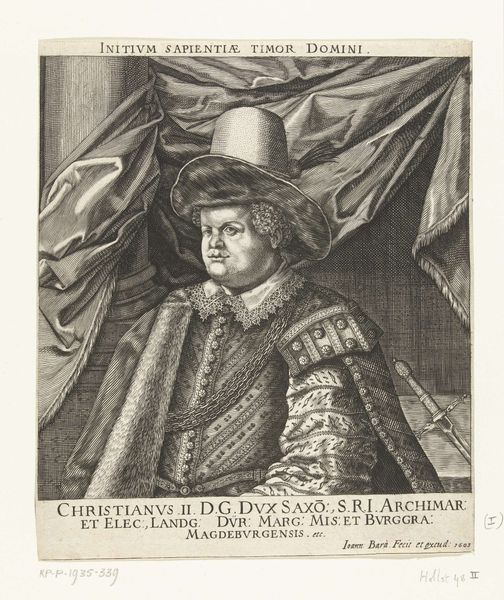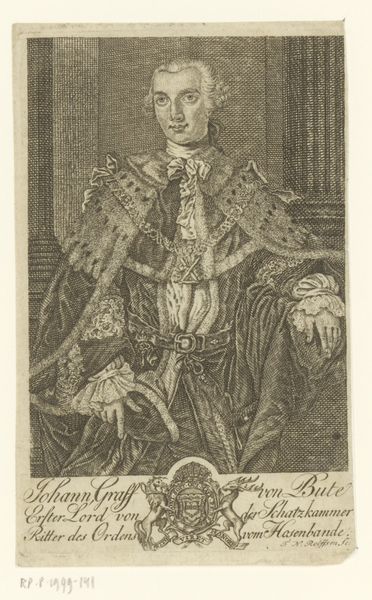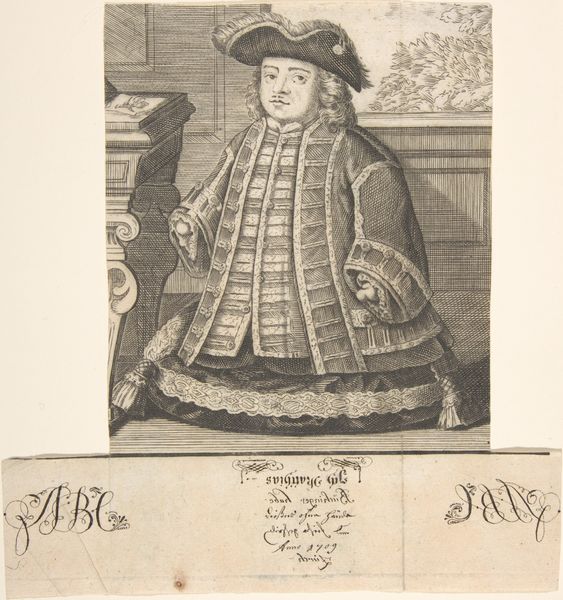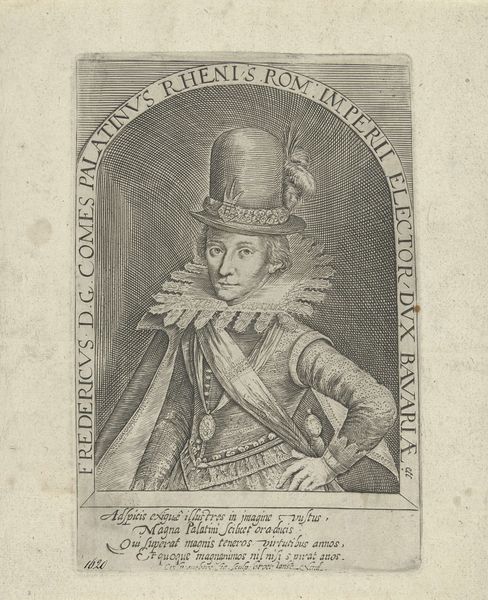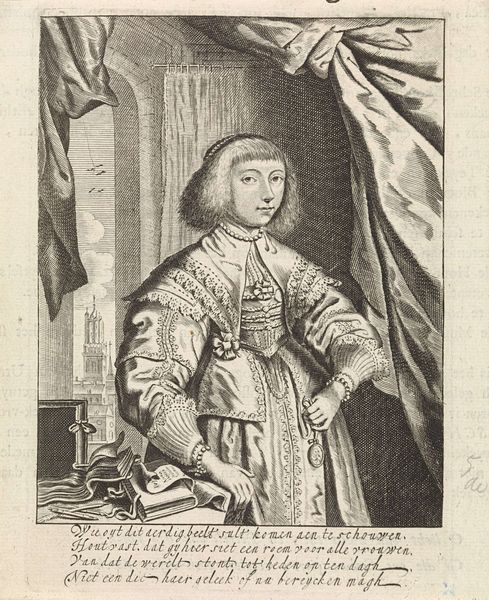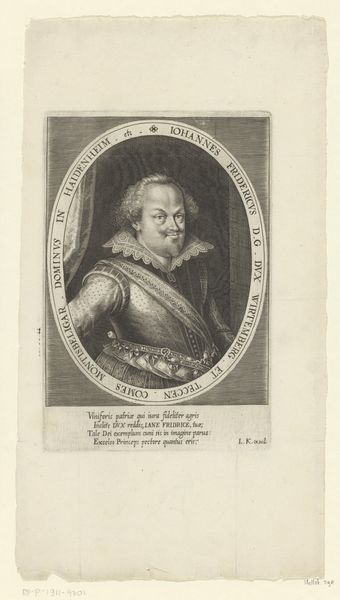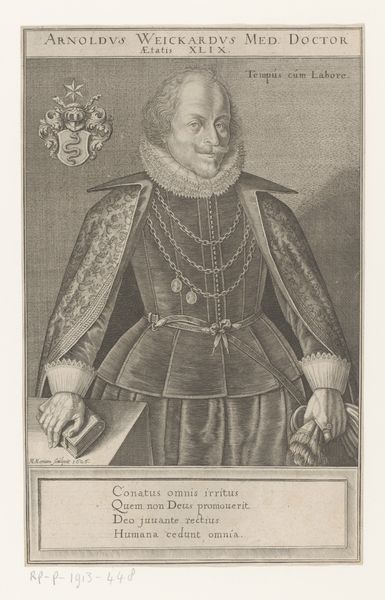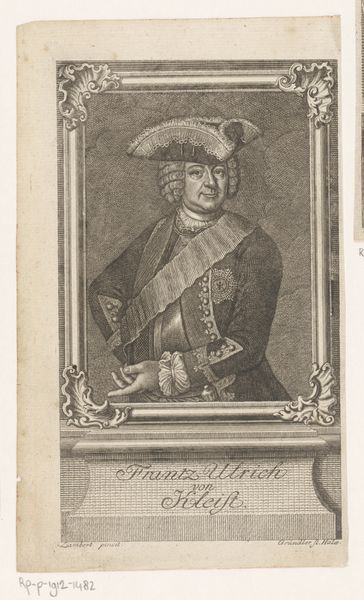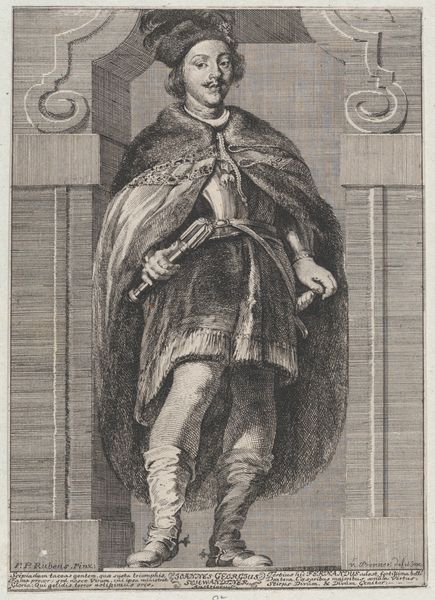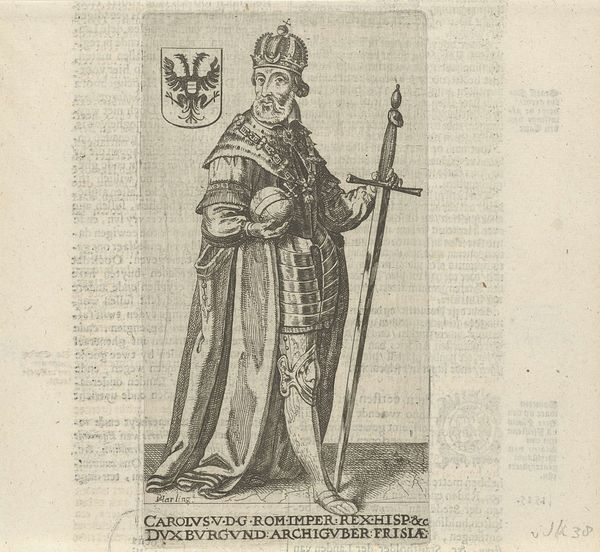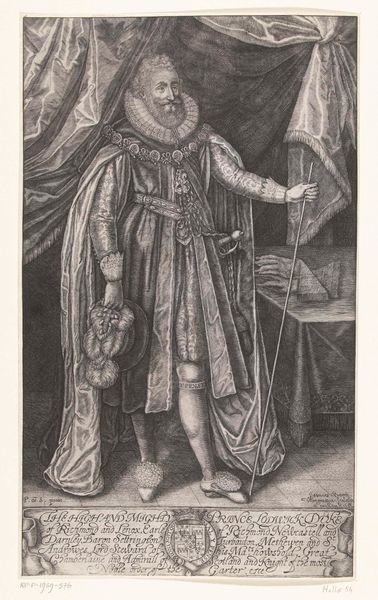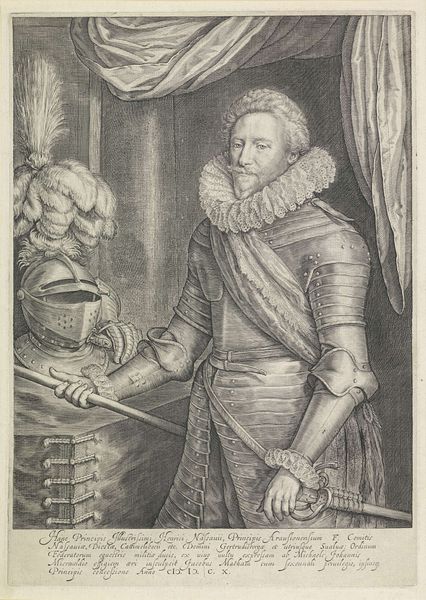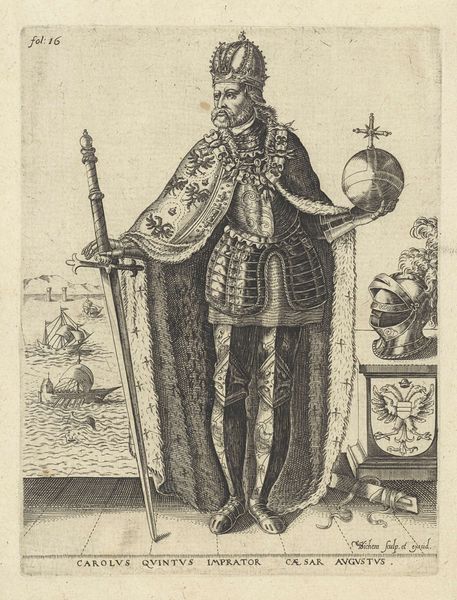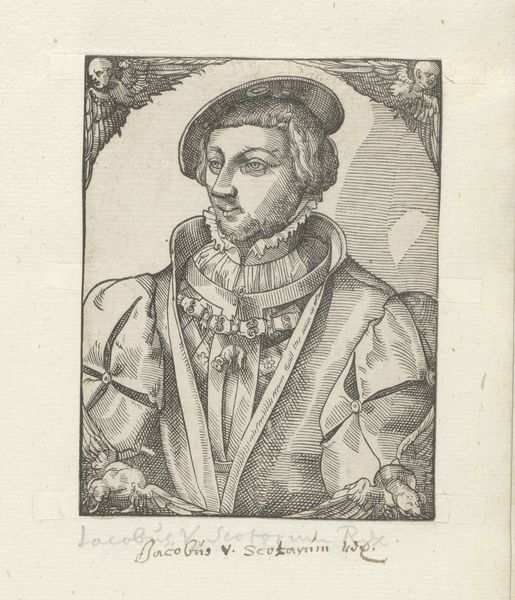
print, engraving
#
portrait
#
aged paper
#
baroque
# print
#
old engraving style
#
history-painting
#
engraving
Dimensions: height 188 mm, width 161 mm
Copyright: Rijks Museum: Open Domain
Editor: This is a print titled "Portret van Augustus II hertog van Saksen" by Johan Barra, dating from 1603 to 1634. It’s an engraving, giving it this fantastic hatched texture. The way the lines build up value creates such a strong sense of form. What do you see in this piece? Curator: I’m immediately drawn to the formal relationships between the textures: the plushness of the curtain behind the subject contrasts exquisitely with the meticulously rendered details of Augustus's garments. The density of line work suggests varying weights and therefore implied depth within the picture plane. Editor: Yes, the density! It’s amazing how much information is conveyed simply through line. I’m wondering, does the formal structure relate to Baroque sensibilities? Curator: Indeed. The baroque ascribes to the creation of depth through rigorous rendering, to achieve "illusion" or perfection on the surface. Look at the framing inscription, "INITIVM SAPIENTIAE TIMOR DOMINI," acting almost as a proscenium. Also, note how Barra deploys strategic contrasts: a flattened picture plane punctuated with deep recessions. Editor: That's a great point! It's like the surface competes with perceived space. I learned so much about textures in relation to how Baroque artists made spatial decisions within the picture plane. Curator: Exactly, seeing it this way emphasizes that a portrait's apparent representation of reality involves calculated design and construction using all manner of graphic elements.
Comments
No comments
Be the first to comment and join the conversation on the ultimate creative platform.
